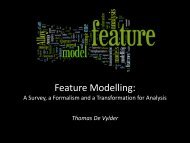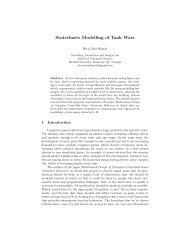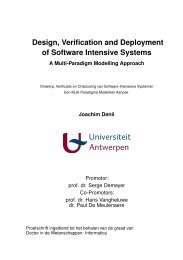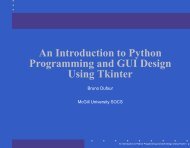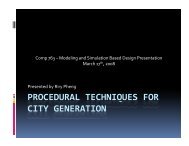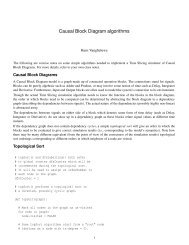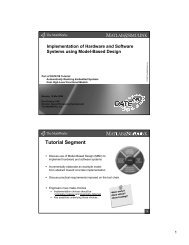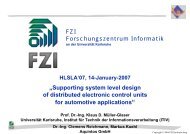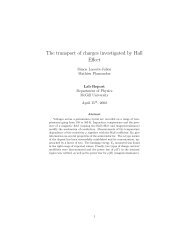Object-oriented framework for modelling and ... - ResearchGate
Object-oriented framework for modelling and ... - ResearchGate
Object-oriented framework for modelling and ... - ResearchGate
Create successful ePaper yourself
Turn your PDF publications into a flip-book with our unique Google optimized e-Paper software.
provide a decision support <strong>for</strong> a large application domain. This meta-model can then be reused <strong>for</strong> many<br />
simulation model development.<br />
The identification phase is the beginning of a simulation study. This phase consists in defining a<br />
problem concerning a phenomenon. Then <strong>for</strong>mulating the problem a system is identified within an ap-<br />
plication domain. <strong>Object</strong>ives are <strong>for</strong>mulated corresponding to the question the system has to answer<br />
about the phenomenon.<br />
The engineering phase consists of iterative processes through which in<strong>for</strong>mal knowledge is trans-<br />
<strong>for</strong>med into an ultimate executable <strong>for</strong>m: the programmed model. To achieve this goal, the system is<br />
specified at different levels of abstraction through a PIM. Each level of abstraction has to be verified re-<br />
garding to the last level of specification.<br />
First a domain analysis has to be conducted together with the specialist of the domain <strong>and</strong> the soft-<br />
ware designer. The objects, the relations <strong>and</strong> the behaviours brunt out are those of interest <strong>for</strong> the do-<br />
main specialist. This work constitutes the domain class model. After this phase, the object-<strong>oriented</strong><br />
analysis (OOA) consists in defining the real system with the system class model which instantiates a<br />
subset of the domain class model. Then, an object-<strong>oriented</strong> design proposes the structure <strong>and</strong> the behav-<br />
iour of a conceptual model. Different abstraction levels can be used to build the conceptual model. The<br />
last level is coded in the implemented model corresponding to the PSM. Finally, the implemented model<br />
outputs are compared to the system objectives.<br />
The integration phase exploits the simulation results to provide in<strong>for</strong>mation to a decision support<br />
(humankind <strong>and</strong>/or a computer system). The decision-makers can interact with the simulation system (1)<br />
proposing new plans of experiments an (re)use the simulation results to solve the problem; (2) improv-<br />
ing the system knowledge looking at the conceptual model; (3) sending comm<strong>and</strong>s to the physical sys-<br />
tem (if it exists) or to the conceptual system (if the system has to be (re)configured).<br />
10




